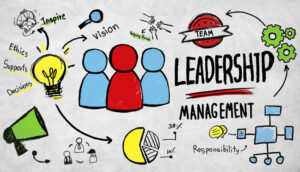Dave Salisbury looks at the actions that drive good leadership in the contact centre.
A good leader can improve the call centre, promote communication, and develop people. While some actions will cross from a leader to a manager, it remains safe to say, “A leader is never a manager, and a manager never leads.”
Leadership requires training. Listed below are concrete actions that will bring immediate results.
1. Recognise when your fellow workers do something right
Catch your fellow workers doing something right and focus their efforts in duplicating right by promoting recognition.
This is a cycle: catch a person doing right, thank them, and the impetus for doing right will be supported. “Praise is as good as cash” (Steenhuysen, 2008). Leaders offer sincere praise, say “Thank You” verbally and in writing, and seek the good in every environment. Allow yourself to be caught doing good.
Monetary reimbursement is hard to change and remains reserved for special occasions like annual performance reviews, quarterly profit bonuses, and promotion ceremonies.
Non-monetary compensation should happen daily, from acknowledging an employee for going above and beyond their assigned tasks to birthday cards, thank-you notes, and daily being “caught” doing something right leading to weekly contests for being “caught doing something grand.” As an investment in catching people doing right, a couple of cinema tickets and a gift card to a restaurant will bring an incredible ROI.
These non-monetary forms of compensation are more powerful than cash when used appropriately – not instead of cash, but in conjunction with monetary remuneration at specified times.
2. Promote the ability to choose
Promote and support agency in others. Agency is the ability to choose; regardless of consequences, the choice to act remains. Boler (1968) discussed how agency as a principle of choice echoes through daily action and promotes accountability and responsibility after the choice goes hand-in-hand with agency to choose.
This does not mean you will agree with the choices made by others. When disagreement occurs, use these as training opportunities. Empowerment is agency in action. Placing the power to do the most good and making decisions at the lowest level in the organisation is good business sense and projects your trust. Support the decision, and if it needs to be changed, the person who made the decision corrects the decision.
3. Listen and make notes
Listen, make notes, listen, and listen some more. The best leaders always have the ability to make notes somewhere close to hand. On a personal note, I worked for a VP who walked around with purple Post-It Notes and yellow Post-It Notes; purple was for catching the good and leaving cheerful messages, yellow were questions.
I was always amazed at the question quality, but everyone in the call centre was thrilled to have a purple note. When listening and making notes, you will leave an emotional impact; choose to leave a positive emotional connection.
4. Don’t hesitate
Leaders act, do not hesitate, do not stop-start, do not think the problem or solution to death, act. The US Army has an axiom, “It is better to make a decision in time and act than to not act at all. A poor decision can be corrected, hesitating cannot.”
What does this mean to a call centre leader? Action in the moment-to-moment work will alleviate problems and show your support for your people. Title and role are not important, action is; thus, any employee can learn to be a leader through action.
5. Open the doors to training opportunities
Open the doors to training, employing company training, cross-functional training, and education. This could be as simple as asking for training from another person to promoting company-training opportunities. Even if the training is annual training, something done previously, remember training represents tools to support others, so stay positive. Nothing can be more damaging to others than to hear negativity about training.

Dave Salisbury
This leads to a “Knowing Society.” Culturing a “Learning Society” should be your first goal. Here is where setting the example meets the reality road.
Demonstrate how training lifts, elevates, and promotes knowledge even for annual compliance training requirements.
Gray and Larson (2006) used Winnie the Pooh to teach business, and the final word comes from their delightful books.
- Select a dream
- Use your dream to set a goal
- Create a plan
- Consider resources
- Enhance skills and abilities
- Spend time wisely
- Start! Get organised and go
“…It is one of those acro-whatevers, said Pooh” (Gray & Larson, 2006, pg. 99).
With thanks to Dave Salisbury, Operations and Customer Relations Specialist
References
Gray, C. F., & Larson, E. W. (2006). Project management – The managerial process. Boston: The McGraw-Hill Company.
Kuhn, T. S. (1996). The structure of scientific revolutions. (Third ed., Vol. VIII). Chicago, ILL: The University of Chicago Press.
Steenhuysen, J. Praise as good as cash to brain: study. (2008, April 24). Reuters. Science. Accessed from: http://www.reuters.com/article/scienceNews/idUSN2343219520080424?feedType=RSS&feedName=scienceNews
Tribus, M. (n.d.). Changing the Corporate Culture Some Rules and Tools. Retrieved from: Changing the Corporate Culture Some Rules and Tools Web site: http://deming.eng.clemson.edu/den/change_cult.pdf
Author: Dave Salisbury
Reviewed by: Jonty Pearce
Published On: 30th Sep 2015 - Last modified: 16th May 2024
Read more about - Customer Service Strategy, Dave Salisbury, Employee Engagement, Team Management




































its been great help to have this site!!!fantastic!!